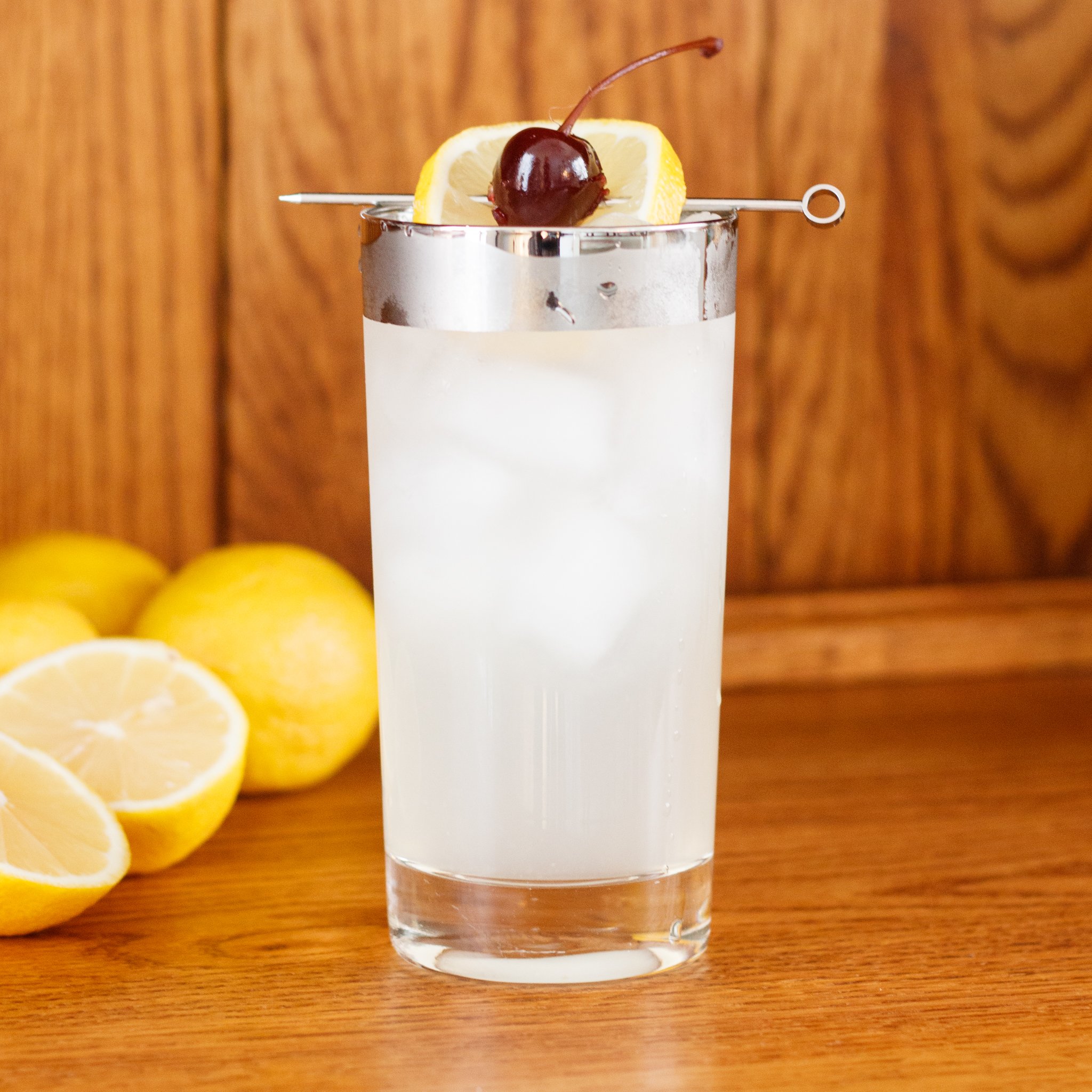2 ounces London dry gin
1 ounce fresh lemon juice
1/2 ounce simple syrup (1:1 sugar:water)
Soda water
Optional garnish: lemon wheel & maraschino cherry
Add the gin, lemon juice and simple syrup to a Collins glass. Fill the glass with ice, top with soda water, and stir to combine. Garnish with a lemon wheel and maraschino cherry if desired.
While we don’t know for certain who came up with the Tom Collins, we do know that the first written Tom Collins recipe is from the second edition of Jerry Thomas’ “Bartender’s Guide”, published in 1876.
We also know that the name likely came from a strange prank that was popular in New York in the early 1870s. People would tell a stranger in a bar that a man named Tom Collins was walking around the city telling lies about them, and that they had better find him and stop him from slandering them even more. Whoever heard this story would go up to the bar asking for Tom Collins, and as the story goes, some bartenders decided to invent a drink they could serve to anyone at the bar asking for Tom Collins.
From New York the prank spread to other cities, and in 1874, the Gettysburg Compiler wrote, “Have you seen Tom Collins?”
“If you haven’t, perhaps you had better do so, and as quick as you can, for he is talking about you in a very rough manner–calling you hard names, and altogether saying things about you that are rather calculated to induce people to believe there is nothing you wouldn’t steal short of a red-hot stove.”
“This is about the cheerful substance of a very successful practical joke which has been going the rounds of the city in the past week. It is not to this manor born, but belongs to New York, where it was played with immense success to crowded houses until it played out.”
The Great Tom Collins Hoax of 1874 was so internationally well known that two years later Jerry Thomas included his own Tom Collins recipe in his bartender’s guide. His initial recipe was a bit complicated though, so over the years bartenders simplified it into the Tom Collins recipe we recognize today.
While this seems to be the commonly accepted origin story, David Wondrich believes that it actually could have been named after a bartender at a popular London hotel in the 1870s. Many hotels in London at the time were famous for their gin punch recipes, but bartender John Collins decided to switch things up and make his gin punch into a cocktail instead. His hotel was trendy with young people, and the cocktail was a relatively new invention, so they loved it and it was an instant hit. Unfortunately for John Collins, his cocktail recipe called for Old Tom gin, and somehow people may have mixed up the names Tom and John and started calling the drink a Tom Collins. It is also possible that both stories are true and people started calling John Collins’ cocktail a Tom Collins because of the popularity of the Great Tom Collins Hoax of 1874.
One thing that isn’t up for debate is that by 1876 the recipe had found its way to Jerry Thomas. Along with lemon juice and soda water, Thomas’ recipe called for gum syrup as a sweetener, and likely would have been made with old world Dutch Genever gin. Instead, modern versions use London dry gin and simple syrup along with the lemon juice and soda.



